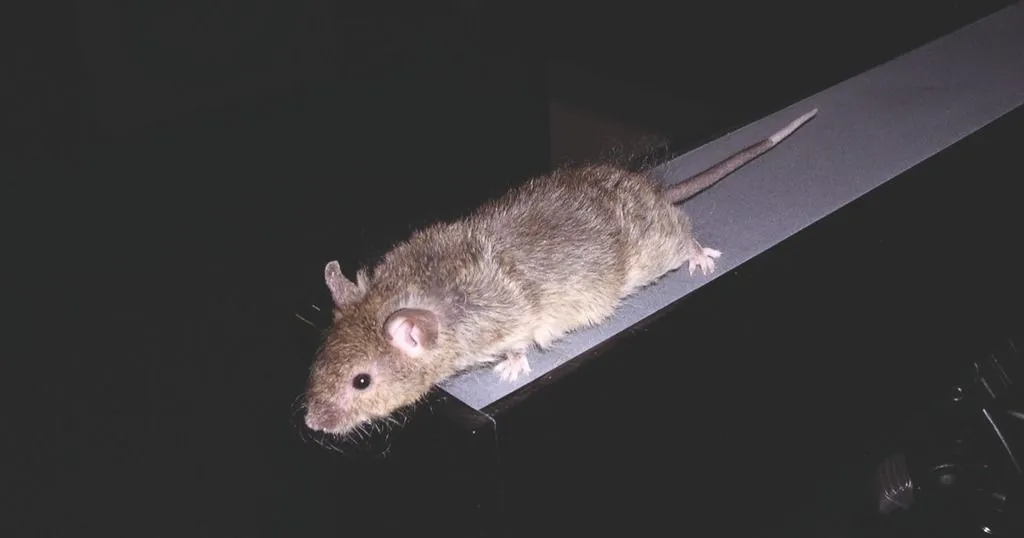Freeze! A recent study on PTSD and the immune system
It is pretty well-known that stress and anxiety have an effect on the immune system. This can be a real problem, especially in psychiatric disorders.
Posted by
Published on
Thu 12 Apr. 2018
Topics
| Fear Conditioning | PTSD | Rats | Stress |

It is pretty well-known that stress and anxiety have an effect on the immune system. This can be a real problem, especially in psychiatric disorders involving depression and anxiety, such as Post-traumatic stress disorder (PTSD). Researchers are now identifying critical neurological factors in the physical and mental consequences of this disease.
PTSD
PTSD is a mental disorder often associated with survivors of combat, but can also occur after natural disasters, serious accidents, or abuse. According to PTSD United, it affects about 7.7 million American adults in a given year. Aside from the obvious mental strain on these patients, these people also have among the highest rates of healthcare service use.
Research on PTSD
There is an obvious need for effective treatment. In a recent study, Meghan Jones and her colleagues (Brain, Behavior, and Immunity, 2018) investigated the role of a protein called interleukin-1β (IL-1β) in PTSD.
IL-1β is a cytokine, a small cell-signaling protein in the brain that has a regulatory role in the immune system. It has found to be elevated in cases of PTSD, and Jones et al. wanted to unravel the immune dysregulation and specifically the role of IL-β in PTSD.
Rat model for PTSD
For this, they used a rat model of stress-enhanced fear learning. This means that the animal is exposed to stress prior to a typical fear learning test.
In the fear learning (or fear conditioning) test, the animal is exposed to a foot shock in a certain context, such a cage with patterned walls. It quickly learns to associate the context with this negative experience; in subsequent exposure to this context, the animal becomes fearful even without the shock.
Stress-enhanced fear mimics PTSD
A typical rodent will show fear in the form of freezing behavior in a fear conditioning test. Stressing the animal beforehand, as is done in the stress-enhanced fear learning method, is known to reproduce many core symptoms of PTSD, such as enhanced fear learning, anxiety, a heightened startle response, and impaired fear extinction (Blouin et al., 2016).
Methodology
In this research by Jones and colleagues, animals were exposed to "beforehand stress" in context A on day 1. After spending a couple of days in the home cage, rats underwent mild stress on day 8 in a new environment, context B. In the following days, their response to just exposure to context B, without a stressor, was measured.
Measuring fear
Freezing is a behavior generally accepted as a reliable measure of fear. During freezing, the animal is completely still, except for small movement caused by breathing.
Freezing can be automatically detected using the Activity parameter in the video tracking software EthoVision XT. The software analyzes changes on the pixel level from one video frame to the next to detect activity vs inactivity. In this study, the activity threshold was set at 10, but this can be modified by the researcher, as it might need tweaking for smaller or larger animals.
Stress and hypersensitivity
During the experiments, it became apparent that rats that were stressed in context A showed significantly more freezing in context B compared to a control group of non-stressed rats that did not receive foot shocks in context A.
The effect of IL-1β
Not only did the stressed animals show more freezing, they also had higher levels of IL-1β in their brains. So to further investigate the role of IL-1β, half of the rats from both the stressed and control group received a IL-1β antagonist, in between the exposure to contexts A and B. This blockage of IL-1β attenuated the enhanced fear learning effect, and brought it down to the levels of the control groups.
Possible therapeutic target
This study shows the important role of IL-1β in the development of PTSD-like symptoms in rats, as stress caused higher levels of IL-1β and rendered the animals hypersensitive for subsequent fear learning. In line with previous studies, this shows that IL-1β signaling can be an interesting therapeutic target in the treatment of PTSD.
References
- Blouin, A.M.; Sillivan, S.E.; Joseph, N.F.; Miller, C.A. (2016). The potential of epigenetics in stress-enhanced fear learning models of PTSD. Learning & Memory, 23, 576-586.
- Jones, M.E.; Lebonville, C.L.; Paniccia, J.E.; Balentine, M.E.; Reissner, K.J.; Lysle, D.T. (2018). Hippocampal interleukin-1 mediates stress-enhanced fear learning: A potential role for astrocyte-derived interleukin-1β. Brain, Behavior, and Immunity, 67, 355-363.
Photo credit header: keaneyefoto
Related Posts

How to easily automate the elevated plus maze test

Zinc deficiency, depression and electrical signals in the brain


